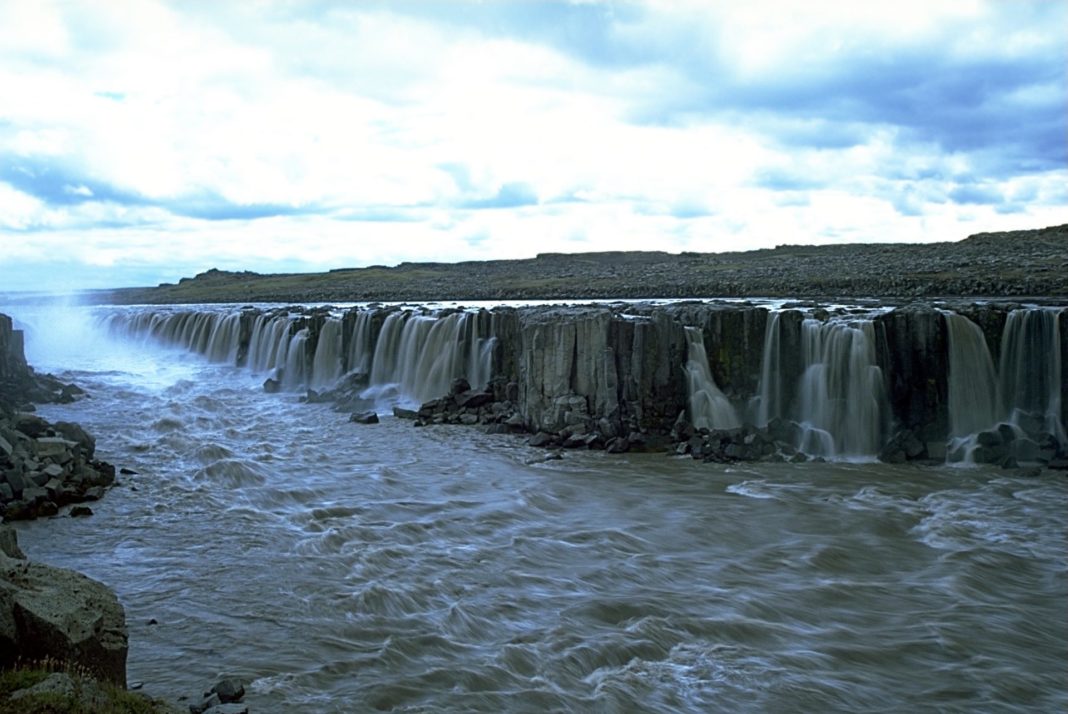Selfoss waterfall is situated upstream from another famous Icelandic waterfall called Dettifoss. While Dettifoss is renowned for its sheer power and volume, Selfoss is appreciated for its graceful cascade and beautiful surroundings. The waterfall is particularly striking during the summer months when the glacial meltwater is at its peak, creating a dramatic display as it plunges over the edge of the cliff.
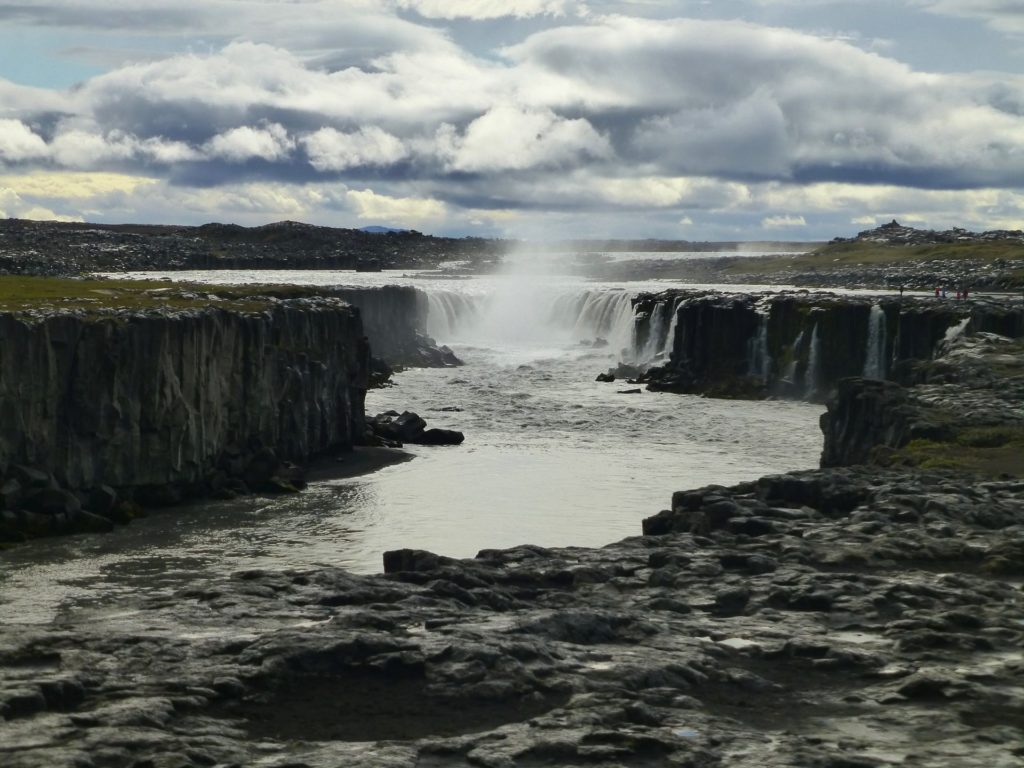
The area around Selfoss is formed by volcanic activity, with basalt cliffs and rock formations dominating the landscape. These volcanic formations contribute to the dramatic scenery surrounding the waterfall.
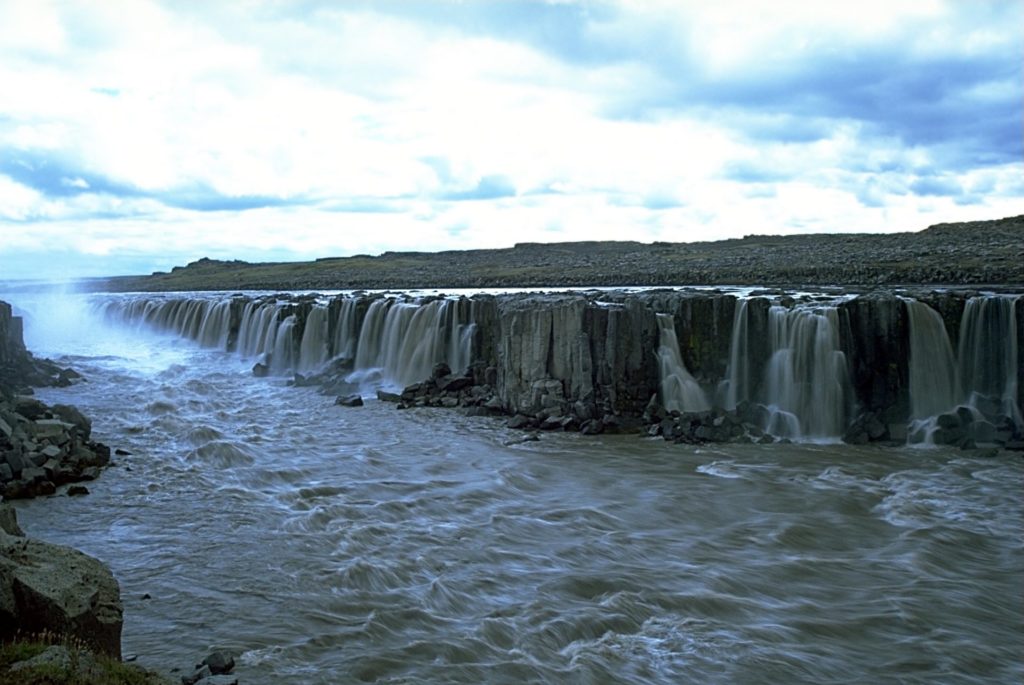
The river has carved deep canyons and gorges into the landscape over time, creating dramatic geological formations surrounding the waterfall. These canyons offer viewpoints from which visitors can admire the waterfall and the surrounding scenery. Selfoss itself is a series of cascades rather than a single drop, creating a more intricate and multi-tiered waterfall. The water flows over the basalt cliffs in a graceful manner, adding to the scenic beauty of the landscape.
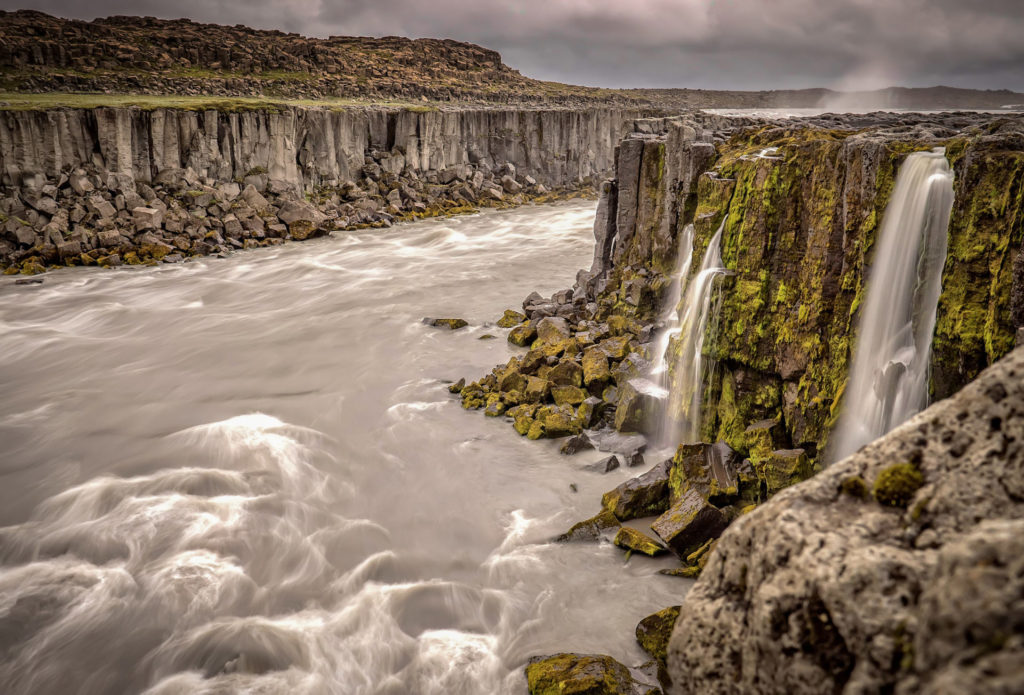
The waterfall itself may partially or fully freeze during the coldest winter months, creating a stunning icy spectacle. The flowing water is transformed into intricate ice formations, which can be quite mesmerizing to behold.
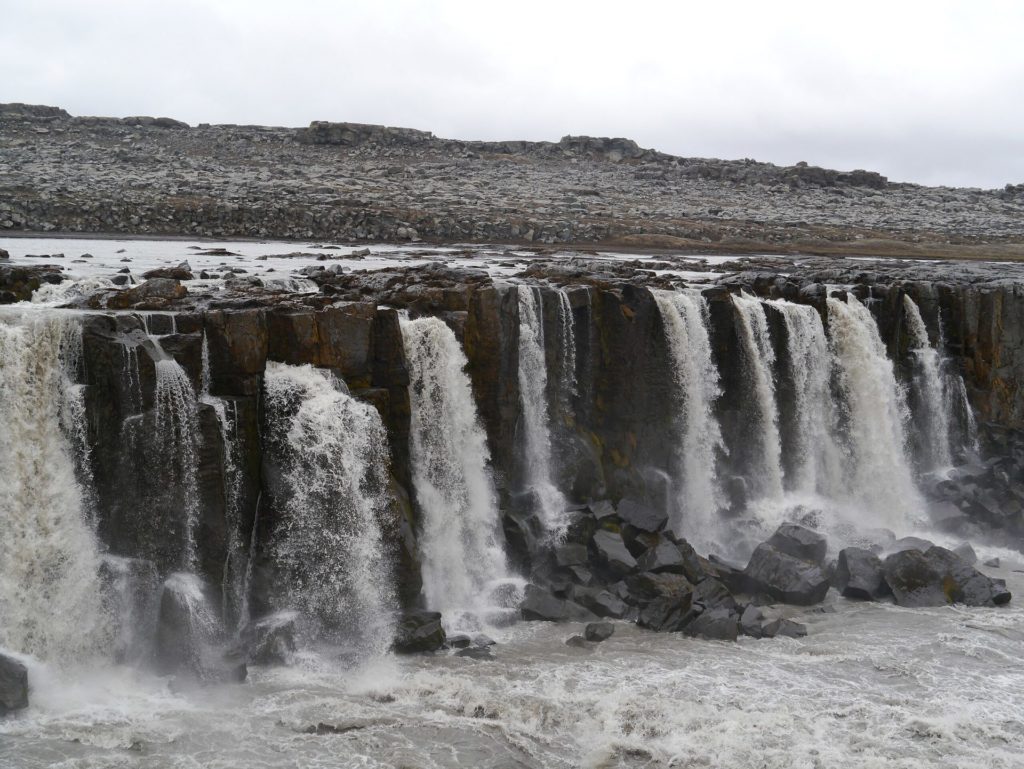
The landscape around Selfoss waterfall is characterized by its raw and untamed beauty, with volcanic formations, glacial rivers, and rugged terrain combining to create a truly spectacular natural environment.
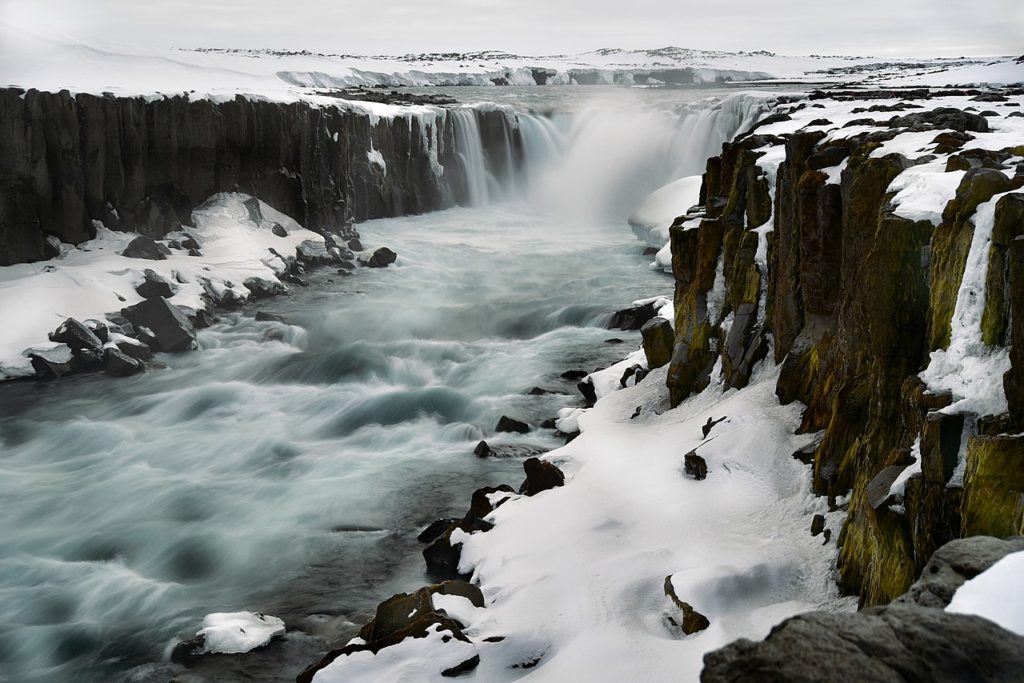
According to the Internet





